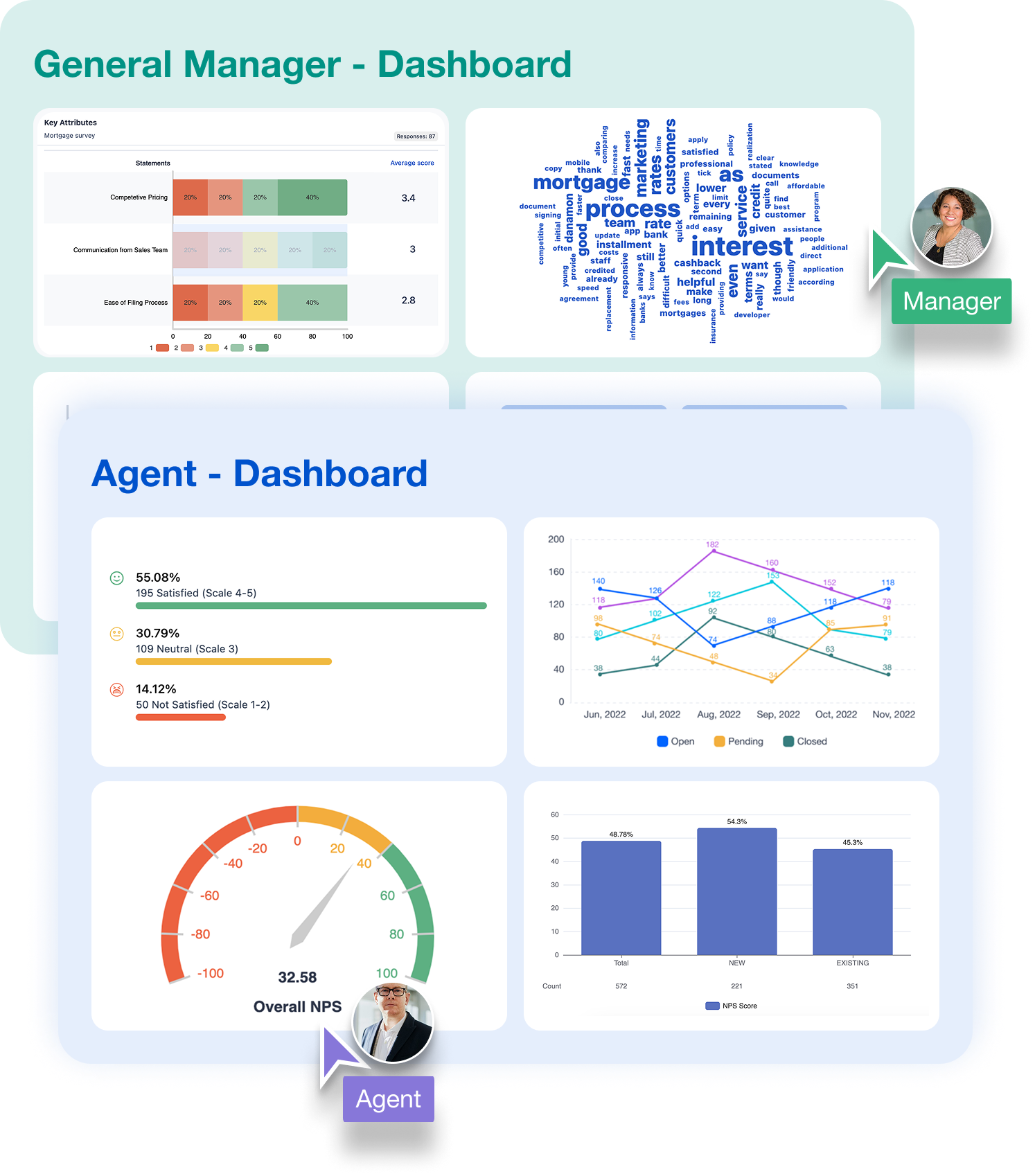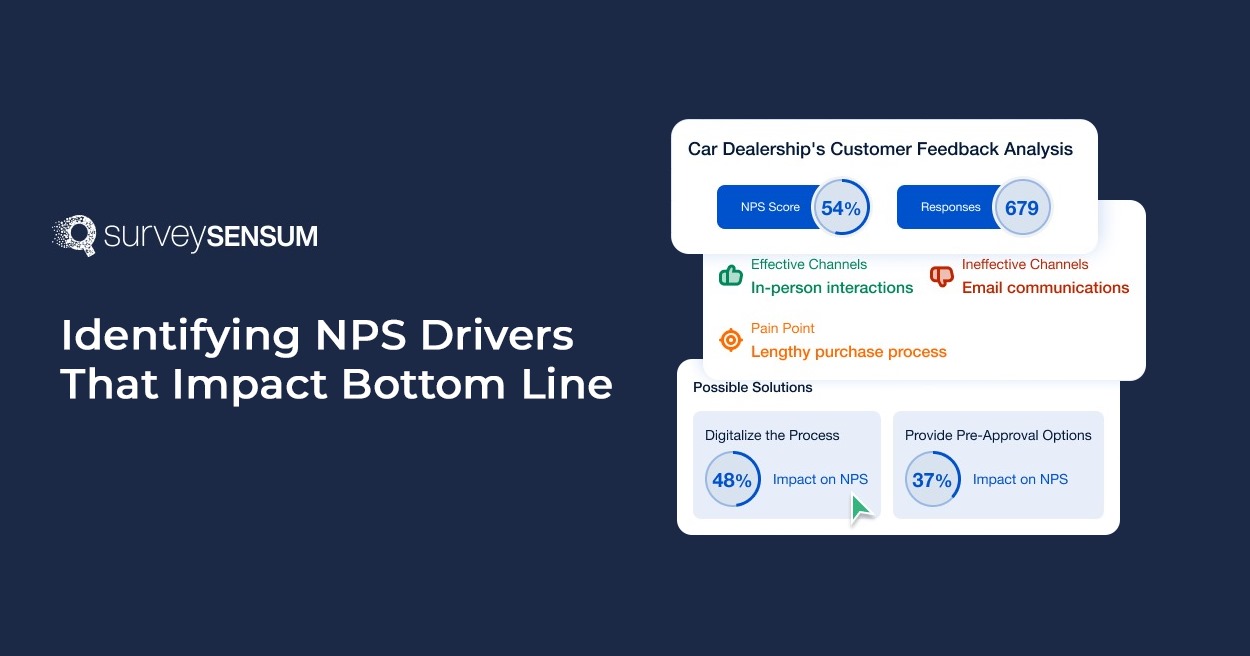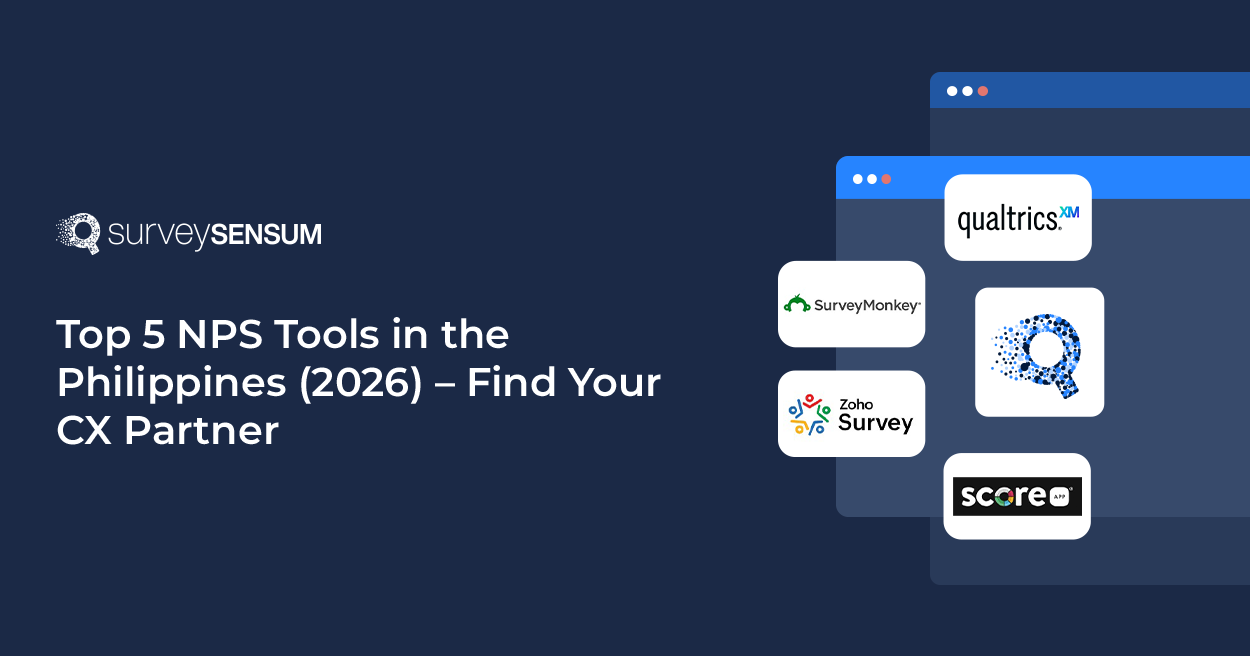

NPS scores provide businesses with an overall picture of customer loyalty and satisfaction. However, this CX metric doesn’t explain the “why” behind why customers feel the way they do.
And this “why” is derived from the NPS drivers analysis.
These NPS drivers not only help you improve your NPS score but aids you in prioritizing efforts in the areas that matter most to your customers.
However, identifying your key Net Promoter Score drivers and prioritizing them in terms of their impact on your bottom line requires more than the right tool, it requires a nuanced understanding of your NPS metrics and KPIs which can be a big challenge. This is because more often than not, CX professionals have little to no knowledge of how to correctly track their progress, which KPIs to track, how to monitor them, how to prioritize action, etc.
So, let’s see how to overcome this challenge.
What Are NPS Drivers?
Let’s say you are a regular shopper at Sephora. You buy all your beauty products from this store. You are one of their loyal customers.
What makes you want to go back to the store again and again? What drives your loyalty towards them? Perhaps it is the wide range of products they offer, or the discounts and special offers they run, or maybe their loyalty program is valuable for you, whatever is the reason that prompts you to go back to the brand and stay loyal to it, are all NPS drivers.
These factors drive your customer’s loyalty toward your brand and influence their shopping decision and their likelihood to recommend the brand to others.
These drivers fall under five categories:
- Product or Service Quality: How well your product or service meets your customer’s expectations and delivers value to them.
- Brand Experience: How well you have established an emotional connection with your customers as a brand, through marketing, reputation, and trust.
- Price/Value: How fair your product or service pricing is when it comes to quality and benefits.
- Convenience and Ease of Use: How simple and accessible your product or service is, including its user-friendliness and intuitiveness.
- Employee Experience: How satisfied your employees are as it directly impacts their interaction with your customers which impacts your customer satisfaction and loyalty.
Let’s now uncover the correct way to do an NPS driver analysis.
How To Do NPS Drivers Analysis (Effectively)?
The Challenge:
The biggest challenges with NPS driver analysis are businesses don’t know how to identify what are their NPS drivers, which KPIs to track to improve their NPS, how to create a robust dashboard, how to do impact analysis to prioritize action, and how to study their dashboards to understand the state of the NPS.
Due to these challenges, businesses are unable to understand the state of their current NPS program which leads to inadequate action in a haphazard manner that doesn’t bring the desired results.
The Fix: CX Consultation
Just imagine, you have all the NPS data on a board but have no idea where to begin, which issues to first resolve, which KPIs to track, etc.
Taking action at this point won’t yield any successful results because you don’t know which drivers of NPS have the most and least impact and which KPIs match your NPS goals.
To resolve these issues and gain the correct understanding of your NPS performance, you need robust NPS software that comes with CX consultation and implementation support. These consultants will enable you to:
1. Identify key NPS drivers that impact your bottom line with the help of the impact analysis feature that does an impact analysis of each driver to enable you to prioritize your action for a strategic improvement in customer satisfaction and loyalty.

2. Measure NPS at each touch point in a customer journey because not all journeys are the same. This will enable you to pinpoint the exact moments where customer satisfaction dips with the help of journey-based NPS surveys.

3. Run ad-hoc surveys to gain specific insights into critical areas such as customer churn, drop-off, product satisfaction, and others, so that you can address these specific issues and improve customer retention.

4. Share the right information with the right person with the role-based dashboard. These dashboards enable businesses to create a customized view tailored to each individual’s specific role and responsibilities, ensuring no more data overload.

Along with CX consultation, you also need to understand the process of NPS data analysis and how to track progress.
How To Analyze NPS Data With SurveySensum?
1. NPS Text Analytics
In an NPS survey, along with the standard NPS question, it is also important to add an open-ended question that allows customers to elaborate on their experience. However, analyzing this feedback correctly can be a real headache. Imagine going through thousands of open-ended feedback to identify common customer pain points and patterns, well you don’t have to.

With Text and Sentiment Analysis software, all you have to do is:
- Train the system by reading a few comments and creating a few relevant categories. For example, for an E-commerce company, relevant categories will be “delivery experience”, “website navigation”, etc.
- Add some keywords related to it.
- In the tag analysis, you will see how the system is now tagging every feedback into its relevant categories, automatically.
- After this, you will also receive a detailed report of the top trends, customer pain points, sentiments, etc.
This report also highlights the top customer issues, how many times they were talked about, and their impact in percentage. This detailed and analytical NPS report will help you gain a bird’s eye view of your customer’s sentiments, and give actionable insights into what needs to be done.
Track important NPS metrics and KPIs with SurveySensum’s customizable, analytical, and intuitive NPS dashboard and take prioritized action to improve your NPS performance!
2. NPS Data Analysis
For an effective NPS driver analysis, businesses first need to understand how to analyze their NPS data correctly as this will provide them with the knowledge of which KPIs to track, what visualization element to use, and how to monitor goals on a continuous basis.
With the following elements, you can analyze your NPS data efficiently and track your progress correctly.
1. Analyze NPS and Get Reports in a Single Dashboard: With all your NPS data in one place, you can easily look for trends, identify top patterns, and general customer sentiments. This NPS dashboard can be customized to add visualization elements such as pie charts, bars, line graphs, etc. These elements will help you gain a bird’s eye view of the current state of your NPS program.

2. Track Individual NPS Responses: Along with a bird’s eye view of your customer’s sentiment and feedback, you also need to uncover customer insights on an individual level. This will enable you to gain actionable insights into each customer’s sentiments, what they like and dislike, their expectations, etc. By viewing each customer’s individual feedback you gain a deeper understanding of each customer’s experience.

3. Compare NPS Data Over Time: Tracking only your present state won’t give you an insight into the entire picture of your NPS program and key drivers of NPS, you also need to track NPS data over a period of time. This will enable you to identify trends, and NPS key drivers, and measure the impact of the changes that you have already implemented. You can measure data weekly, monthly, or annually to understand how customer perception changes over time and what changes need to be made in your current strategies.

Conclusion
NPS driver analysis provides businesses with actionable insights into their customers’ sentiments, helps identify top customer trends and pain points, and also helps prioritize initiatives based on their impact on the bottom line. This ensures that businesses are taking calculated steps backed by a proper analysis that will definitely yield results and boost NPS performance.
However, this initiative comes with its own challenges which require the right NPS software, like SurveySensum, to fix the issues and extract maximum benefits. SurveySensum’s detailed and analytical NPS dashboard and reports provide businesses with the right and easy-to-understand insights that will help them take the right initiatives. The tool also provides an impact analysis of the top customer pain points so that you can take prioritized action that will impact your bottom line, instead of a haphazard one.

















